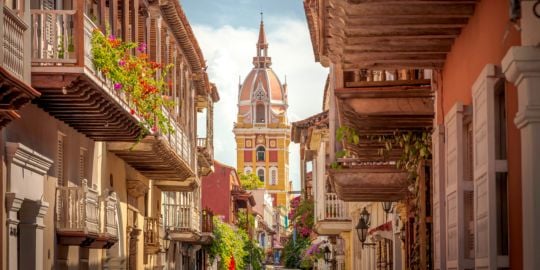Colombia is afflicted with a long-lasting drought
apparently caused by the weather phenomenon
known as El Niño.
I've been in Bucaramanga, Santander .. and it has
hardly rained at all, with no hard rains, in recent months.
This is not a local phenomenon as most of Mexico,
and South and Central America, are affected.
The main reservoir serving the capital district is at
16 percent capacity, the lowest level in memory.
Bogotá is rationing water .. with sectors of the city
designated for rolling 24-hour periods of water shutoffs.
The mayor -- no joke -- is asking people not to take a bath
on a Sunday or any day they're not going out .. and asking
couples to 'shower with a friend'.
Credit... The Guardian









